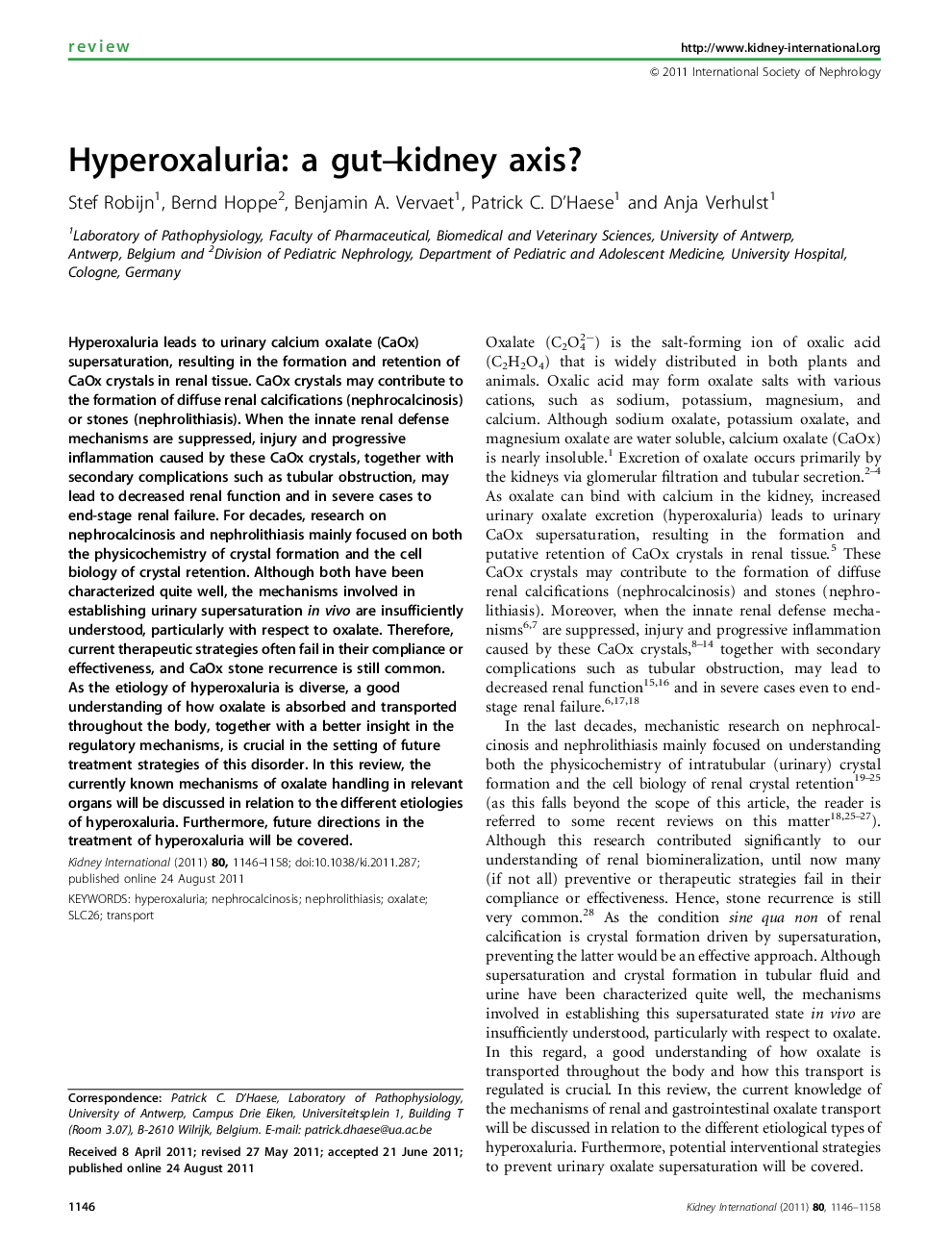| کد مقاله | کد نشریه | سال انتشار | مقاله انگلیسی | نسخه تمام متن |
|---|---|---|---|---|
| 3885990 | 1249530 | 2011 | 13 صفحه PDF | دانلود رایگان |

Hyperoxaluria leads to urinary calcium oxalate (CaOx) supersaturation, resulting in the formation and retention of CaOx crystals in renal tissue. CaOx crystals may contribute to the formation of diffuse renal calcifications (nephrocalcinosis) or stones (nephrolithiasis). When the innate renal defense mechanisms are suppressed, injury and progressive inflammation caused by these CaOx crystals, together with secondary complications such as tubular obstruction, may lead to decreased renal function and in severe cases to end-stage renal failure. For decades, research on nephrocalcinosis and nephrolithiasis mainly focused on both the physicochemistry of crystal formation and the cell biology of crystal retention. Although both have been characterized quite well, the mechanisms involved in establishing urinary supersaturation in vivo are insufficiently understood, particularly with respect to oxalate. Therefore, current therapeutic strategies often fail in their compliance or effectiveness, and CaOx stone recurrence is still common. As the etiology of hyperoxaluria is diverse, a good understanding of how oxalate is absorbed and transported throughout the body, together with a better insight in the regulatory mechanisms, is crucial in the setting of future treatment strategies of this disorder. In this review, the currently known mechanisms of oxalate handling in relevant organs will be discussed in relation to the different etiologies of hyperoxaluria. Furthermore, future directions in the treatment of hyperoxaluria will be covered.
Journal: Kidney International - Volume 80, Issue 11, 1 December 2011, Pages 1146–1158